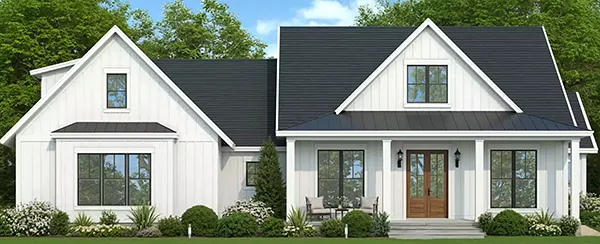How to Weatherize Your Home For Winter
By Lauren Busser, The House Designers Contributing Writer
When the weather gets colder, we tend to turn up the thermostat. Of course, the downside to this is a rise in heating costs. While everyone loves holiday presents, a big heating bill is something we’d rather not discover in the mailbox. Fortunately there are a few simple tricks to keep your home cozy and warm without spending a fortune.
A great deal of heat energy loss in the winter months is due to leaks and drafts. To remedy this, you can caulk and weatherstrip your home to minimize air leaks or use a draft snake along the bottoms of doors. Now is also the time to take off your screens and put storm windows in place. Storm windows are self-contained fitted windows that go over your existing windows to provide your home with an additional layer of insulation. Storm windows today are made from a variety of materials, from aluminum to wood, insuring good options for every home.
Leaky windows are one of the biggest ways houses lose energy, because the HVAC system has to work doubletime to maintain the set temperature. That's why you should invest in efficient windows!
Since you are bound to experience some freezing temperatures in the northeast, it is important not to neglect your furnace. Turn your furnace on early in the season to make sure it works properly. Even if the furnace is working fine, you should still schedule a furnace cleaning and tune-up. It is also important to change the air filter on your furnace every three months, because a dirty filter makes your furnace less efficient.
Insulation is another important consideration when it comes to winterizing your home. While it is possible to over-insulate your home, the right amount of insulation can improve the efficiency of your HVAC system. Simple things like insulating air ducts can improve the efficiency of your HVAC system by 20 percent and insulation can also be added to outer walls, basements, crawl spaces, and attics to increase efficiency. The best place to invest in insulation is your attic. A typical attic needs about twelve to fifteen inches of insulation for the best efficiency.
The outside of your home will also need some attention as the temperatures dip. Your rain gutters should be cleaned and your chimney should be inspected. While it is a myth that your chimney needs sweeping once a year, it should be inspected before use. There are homeowners who have reported everything from a tennis ball to a duck being stuck in their chimney. These sorts of problems are easily avoided with the installation of a proper chimney cap.
Winter is the time for cozying up by the fire and enjoying a mug of cocoa with a blanket, but to keep your whole home comfortable it’s important not to neglect the equipment that keeps it that way. If you maintain it properly there should be no reason for an outrageous heating bill in the cold winter months.



.png)
.png)


